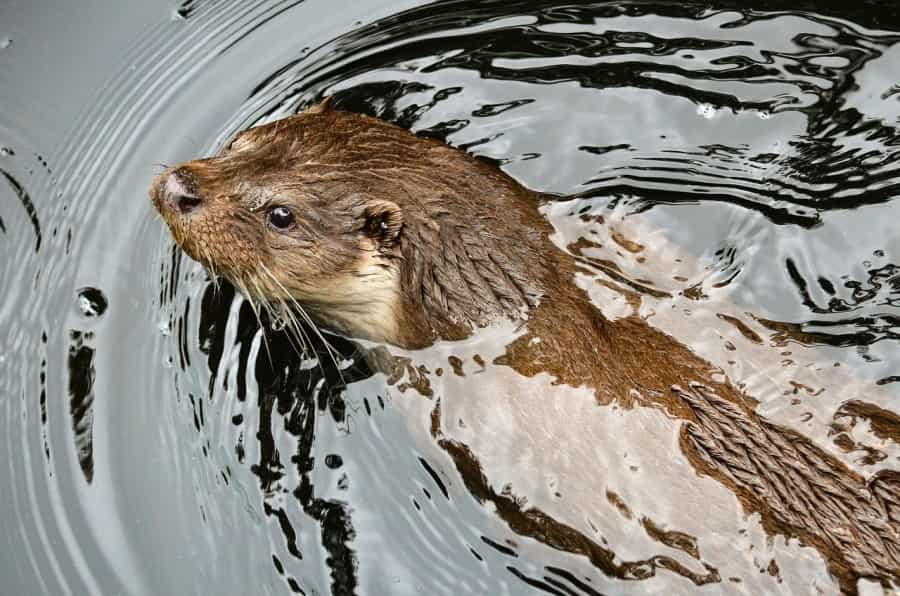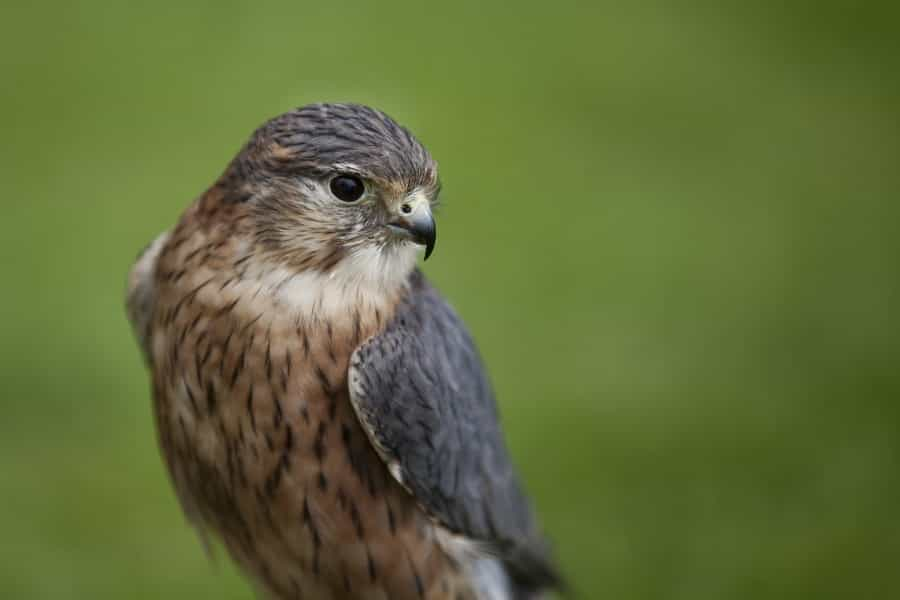Wildlife on the North York Moors

A diverse landscape of moorland, ancient woodlands, pristine rivers and dramatic coastline awaits visitors to the North York Moors National Park – and from rare birds of prey hovering over the heather to the minke whales swimming offshore, its wildlife is as wonderfully varied as their habitats. Read on for Pitchup’s guide to some of the best-loved wildlife in the North York Moors National Park, the best spots for sightings and some clever tips for helping to preserve the fauna and flora within the park.
Moorland and woodland mammals

Common mammals to look out for in the North York Moors include foxes, stoats, hares and all manner of small rodents. If you’re prepared to stay out after dark, you may see stripey-faced badgers pottering around the undergrowth on nocturnal missions in Little Beck Wood Nature Reserve. Keep an eye out for their setts burrowed deep into well-drained sloping ground.
Otters and water voles live on the Esk and Rye rivers, but it’s highly unlikely you will see the voles as they are heavily protected. Your best chance of seeing an otter playing with their young close to the river banks is in June.
Along with fallow and roe deer, you might be lucky enough to see red deer, the largest land mammal in the UK. Look out for herds grazing on open grassland or moving silently through the trees at dawn or dusk – they are recognised by their russet-red coats and cream rumps, and are often accompanied by stags wearing their majestic antlered headgear.
Best viewing spot for red deer: Ashberry Nature Reserve near Rievaulx Abbey.
Good to know: At least one pine marten has been recorded on Forestry Commission land within the national park. Considerable effort is being put into seeing these elusive and rare mammals make a comeback.
Moorland birds

Thanks to its rich moorland habits, the North York Moors is particularly rich in birdlife, with over 180 species of bird recorded from the hides at Scaling Dam Reservoir. Birds of prey – including merlins, the UK’s smallest and rarest raptor – can often be seen hunting over open moorland. Regular visitors include red kites, peregrine falcons and buzzards, and there are occasional sightings of migrating ospreys.
In spring, ground-nesting lapwings (listen out for their distinctive ‘p’weet, p’weet’ calls) and curlews appear on the moors, the latter recognisable by their long, curved bills and eerie chattering.
Best viewing spots: There’s a Raptor Viewpoint in Wykeham Forest, and bird hides at Danby Lodge National Park Centre as well as Scaling Dam. Get the kids into birdwatching with a visit to the bird-feeding station at Sutton Bank National Park Centre.
Good to know: Birdline Northeast (09068 700246) is a 24-hour answerphone service offering up-to-date birdwatching news across the region.
Coastal wildlife
The national park’s spectacular coastline is as diverse as its inland ecosystems, with sea birds and sea mammals to spy on the cliffs and beaches, and cetaceans often seen in the cool waters of the North Sea. And of course there are numerous rock-pooling opportunities on pebble beaches at Runswick Bay and Robin Hood’s Bay; arm the kids with nets and buckets and have a potter around looking for hermit crabs, starfish and sea urchins.
Good to know: The coastline of the North York Moors is also a great place for finding fossils and dinosaur footprints. Visit the Old Coastguard Station in Robin Hood’s Bay to learn more about the area’s 200 million years of geological history.
Sea birds

The towering chalk cliffs running between Flamborough Head and Filey are nirvana for puffins, kittiwakes, gulls and guillemots, as well as the largest northern gannet colony on the UK mainland. Between March and October, the area becomes home to around half a million sea birds as they nest and raise their young on the cliffs.
Best viewing spots: The RSPB’s Bempton Cliffs Nature Reserve and Flamborough Cliffs Nature Reserve.
Good to know: The puffin is one of our best-loved sea birds, celebrated for their rainbow-striped beaks and comical antics; learn more about them at Flamborough Head’s annual Puffin Festival.
Cetaceans
You can often spot dolphins and porpoises in the sea off the North York Moors coastline, along with rarer visitors like Minke whales; from June until late October they follow mackerel and herring shoals south from the Arctic Sea. Humpback and pilot whales often put in an appearance in early autumn.
Best viewing spots: You can occasionally see pods from the beaches or clifftops, but the best way to get up fairly close to the cetaceans is by summer boat trips from Whitby or Staithes. Whale-watching trips also run from Whitby in September.
Seals
Common and grey seals thrive along the coastline of the North York Moors. The best time to see them is when they come ashore to pup, so look out for common seals in June and July and grey seals in November. If you’d like to know more about these endearing seal populations, the Yorkshire Seal Group is the go-to hub of excellence.
Best viewing spots: You can see a large colony of grey seals (numbering around 300) basking on the rocky beach at Ravenscar. It’s a tricky, often-slippery walk down to the beach from the village.
Good to know: Keep your distance from the colonies and have any dogs under close control so you don’t frighten the seals; use binoculars and zoom lenses to get your close-ups. For your own safety, always check tide times when walking along Ravenscar Beach as it is completely covered at high tide.
Plant life on the North York Moors
Central to the national park is its flora, supporting a complex network of bird and animal life. With the various ecosystems of the region – open moorland, centuries-old woodlands and coastal habitats – you can see special natural attractions in every season of the year.
Heather
From late August through to the end of September, bell heather, ling and cross-leaved heather burst into flower across the North York Moors, carpeting the undulating valleys and open moorland with swirls of blooms from the palest pink to deepest purple.
Best viewing spots: Popular places to see the heather include walks from the village of Goathland (the natural amphitheatre at Hole of Horcum and trails across Levisham Moor are particularly spectacular), at Danby Beacon, around Rosedale Chimney Bank above Rosedale Abbey and on Fylingdales Moor.
Ancient woodlands
Around 23 per cent of the national park is planted with woodland, but to be considered ‘ancient’, the trees have to be at least 400 years old. The woodlands normally comprise native species such as birch, lime, ash and oak, and ferns, mosses and rare indigenous plants like yellow archangel or herb Paris thrive in their shade, alongside birds, deer and a myriad of small mammals. Visit in spring when the forest floors are strewn with bluebells, or in summer to see common spotted orchids.
Best viewing spots: Ancient woodlands are particularly prolific in the south-west between Thirsk and Helmsley, with the Waterloo Plantation at Duncombe Park home to numerous pollarded oak trees thought to be around 500 years old. The equally ancient broadleaf woodlands of Forge Valley National Nature Reserve are also teeming with wildlife.
Tips for wildlife watching on the North York Moors
While sightings of red deer, dolphin and merlins can never be guaranteed – you’re dealing with wildlife, after all – you can help your quest by bearing the following suggestions in mind.
Best times to visit
In general terms, early morning and late evening are the best times for wildlife sightings, as animals and birds are active and feeding. However, what you’ll see in the national park also depends on the time of year you’re visiting; so you know what to expect with each season, the park authorities have compiled a useful calendar of the natural year.
What to take
While you don’t need any expensive specialised equipment to go for a nature ramble, the following will add greatly to the enjoyment and comfort of your experience:
-
Binoculars
-
A camera with a good zoom and tripod
-
Field guides/apps to help you identify species
-
Warm clothes and waterproofs
-
A rug to sit on
-
Insect repellent in summer
Wildlife tours
You can often increase your chances of successful wildlife watching by joining guided tours led by local experts; they’ll know all the best spots and can advise on how to make the most of your experience.
-
Keen wildlife photographers can join wildlife safaris and photography sessions with North Yorkshire Wildlife, with high-spec equipment and telephoto lenses to hire.
-
Running between April and September, there are frequent birdwatching and whale-spotting trips from the gorgeous fishing village of Staithes.
-
Seals, whales, porpoises and dolphins can often be seen on boat trips from Whitby, and the steamer Yorkshire Belle departs from Bridlington on sea bird cruises.
-
Visitors with disabilities also have a choice of accessible adventures in the park, from bird-song safaris to daffodil and heather walks along Miles without Stiles routes.
Five tips for responsible wildlife watching
Visitors to the North York Moors National Park have a responsibility to help preserve and protect its fragile habitats. To keep you and the animals safe, always follow the Countryside Code, and bear the following specifics in mind:
-
Keep a safe distance away from wildlife, using binoculars and long-lens cameras to get your close-ups.
-
Never approach a young animal and its mother.
-
Do not disturb ground-nesting birds in the March–July breeding season.
-
Take all your litter home with you, and leave no trace of your visit.
-
Keep dogs away from wildlife completely or ensure that they are on leads.
If you’d like to contribute to the future wellbeing of the North York Moors, you can help by volunteering your time and skills to a range of conservation projects.
Teeming as it is with wildlife, the North York Moors National Park is a veritable paradise for nature lovers; it is also one of the UK’s more popular national parks, with visitor numbers hovering around 8.75 million per annum. Whether you’re embarking on a sea cruise to spot playful dolphins or hoping to photograph deer in a blaze of purple heather across the late-summer moorlands, you’ll need to book your experience well in advance.
The same goes with accommodation. While there is a great variety in the park, from five-star hotels to cosy Airbnbs, you'll have the best chance to observe the wildlife of the North York Moors up close if you stay outdoors. Pitchup has an excellent selection of camping options within the park, from tourer parks to family-sized yurts for a glamping break.